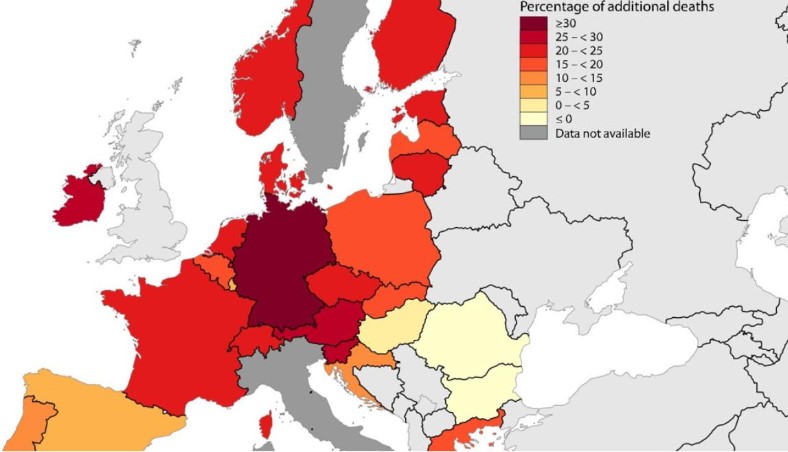Eurostat has published the data on excess mortality in Europe, and Slovenia’s excess mortality is exceeded only by Germany, which is worrying.
The starting point for this analysis and graph is the average number of deaths that occurred each month in the years between 2016 and 2019. Slovenia had one of the highest excess mortality rates.
Excess mortality is a term used in epidemiology and public health to refer to the number of deaths from all causes during a crisis that exceeds what would be expected under “normal” conditions. Slovenia is second only to Germany and ahead of all other European countries in terms of deaths. Janez Janša also responded to the published data, taking a swipe at the Social Democrats party by writing: “Worrying figures. Will there be any more flags in the Tivoli Park, the SD party?”
The government’s poor handling of the coronavirus pandemic is certainly partly to blame for the mortality rate.
Excess mortality in Slovenia is extremely high, according to Eurostat. In Slovenia, according to the latest available data, excess mortality was estimated at 15 percent, according to Eurostat. At the end of 2021, the excess mortality rate was as high as 49 percent. This means that 49 percent more people died in 2021 than on average during the same period in the years between 2015 and 2019. Excess mortality is a more comprehensive measure of the overall impact of the pandemic on deaths than the confirmed number of deaths due to Covid-19 alone. It includes not only confirmed deaths, but also deaths due to Covid-19 that were not correctly diagnosed and reported, as well as deaths due to other causes attributable to the general crisis situation.
High mortality, lower fertility
According to data from the Statistical Office of the Republic of Slovenia, 1,383 children were born in Slovenia in the last month of last year. This was 153 (10 percent) fewer than in the previous December. On average, 45 children were born per day (in the previous year, that number was 50). Provisional data show that just under 17,400 children were born between January and December 2022, or 8 percent fewer than the previous year. Only in May of 2022 were more children born than in the same month in 2021. Final data on all births in 2022 will be published in June.
In 2021, 2,241 Slovenians died. This was 58 (3 percent) fewer than in the previous December and 997 (31 percent) fewer than in December 2020. On average, 72 people died per day (compared with 74 in the previous December and 104 in the same month of 2020). In 2022, provisional data show that just over 22,400 inhabitants died. This was 4 percent less than the previous year and 7 percent less than in 2020. The final number of deaths in 2022 will be published in June. In December 2022, 26 percent more residents died than the average for the same period between the years 2015 and 2019. In December a year earlier, the excess mortality rate was 29 percent.
From the 1st to the 22nd of January 2023, 1,585 citizens of Slovenia died, according to the first estimates. In the same period of the previous year, the number of deaths was lower (1,484)


